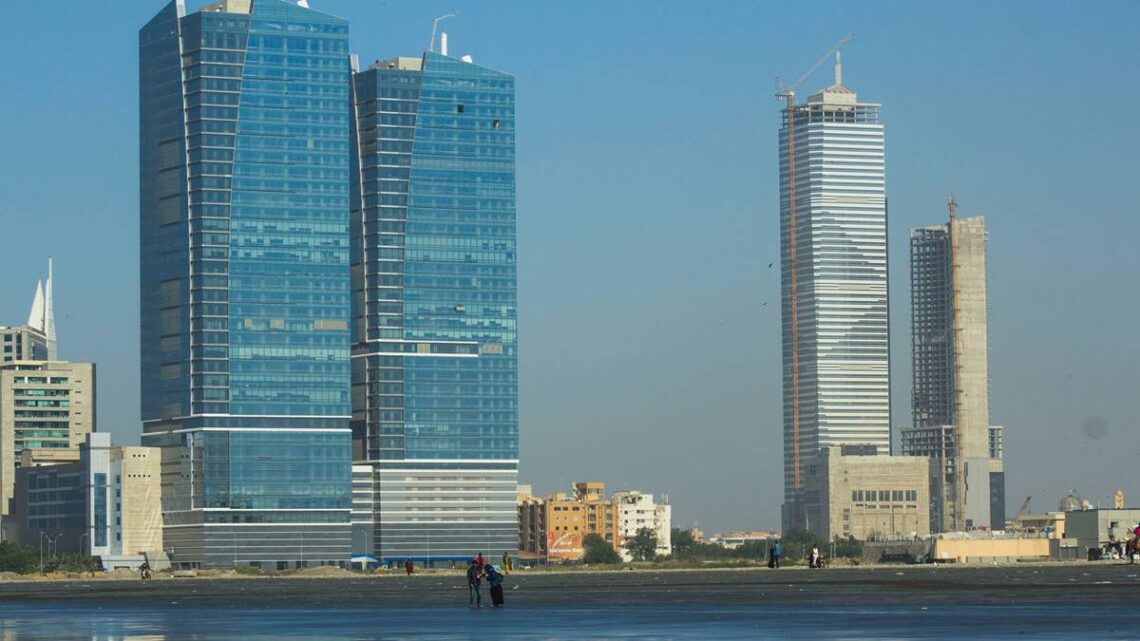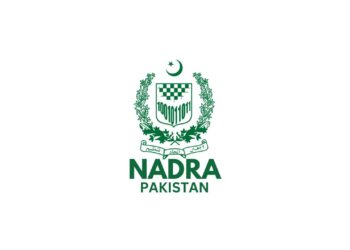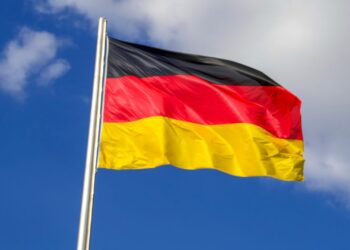Pakistan’s Coastline stretches from Ormara to Karachi. In its natural unspoiled splendor, it is one of the most beautiful and biodiverse in the world. The vistas of natural beauty and wealth of life both on and off these shores have made it a haven for tourists, conservationists, and fishermen.
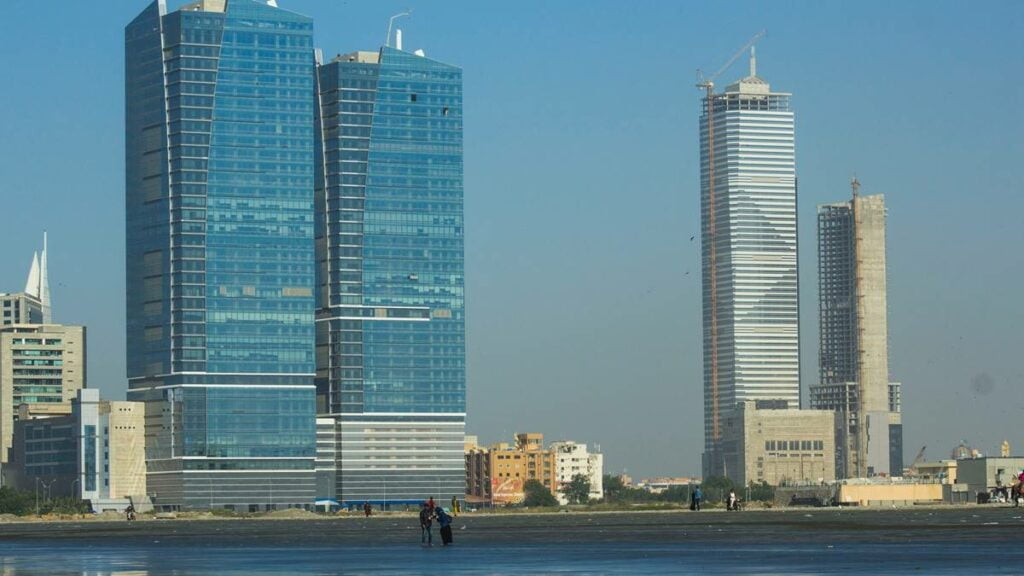
The hustle and bustle of this metropolis makes it easy to forget its humble origins. In the 18th century, Karachi was a fortified trading post for merchants and over subsequent generations many different cultures religions and ethnicities passed through, mingled and overlapped, with each leaving a little bit of themselves behind.
Eventually the settlement grew to encircle some of the fishing villages that dotted the coastline. Today Karachi is a major Seaport and Industrial Powerhouse where the cultural diversity of its original inhabitants coexists often uncomfortably with the new urban sprawl.
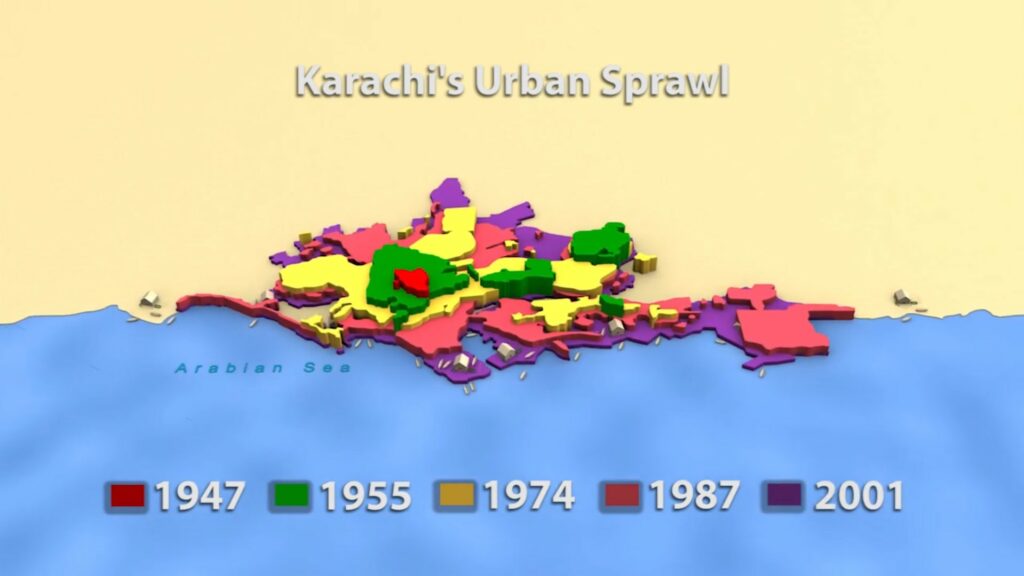
As Karachi’s journey from a trading settlement to mega city illustrates, development is inevitable, but it must be sustainable. The distribution and utilization of land and access to water must focus on the future as well as the present, particularly in a third world economy like Pakistan’s.

Here, corruption and myopic planning and lack of regulatory frameworks ensure citizens are vulnerable to the profiteers that thrive in such an environment. Recent changes along Karachi seashore illustrate exactly how the four interest groups most impacted by unregulated development along a coastline i.e., the flora and fauna, the fishing communities, the general public and landowning agencies can be adversely affected by it.
Karachi’s 75-kilometer-long coastline stretches from Cape Monz to Port Qasim. Just outside the city lie the scenic Paradise Point, the popular French Beach, Hawkesbay, and Sandspit. Behind these beaches are the mangroves of the eastern and western backwaters. The coastline running parallel to the city itself features the Karachi Port, Menorah Island and the DHA beachfront. Offshore, at the very edge of the Indus Delta, lie the Bundal and Buddu Islands. Close by are The Creeks (Gizri and Korangi), which lead to Port Qasim.
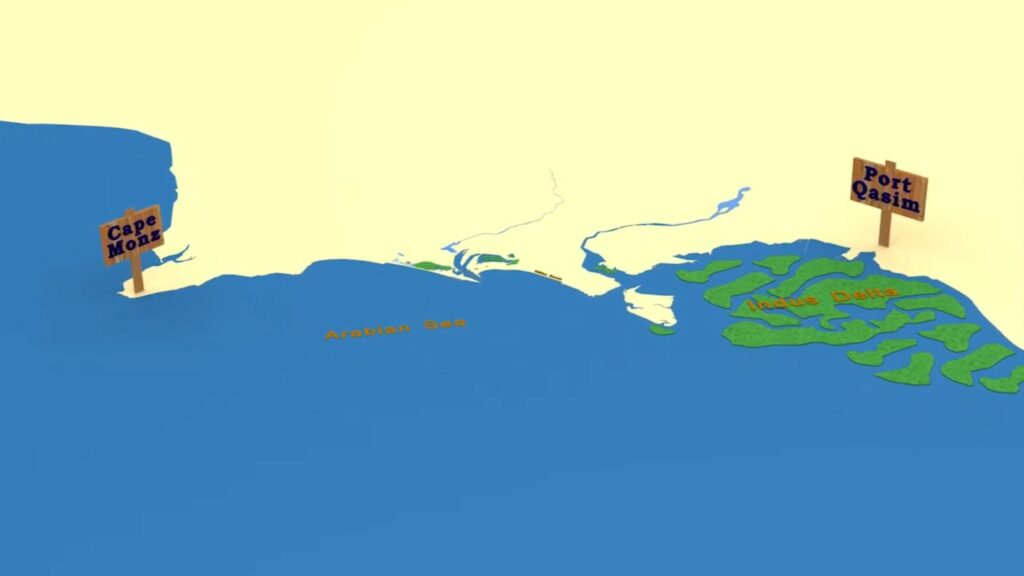
These backwaters, these shores have been home to abundant flora and fauna for generations as part of an ecosystem built upon the foundation of mangrove swamps. Avicenna Marina, the common Mangrove or Temer as it’s locally known acts as a nursery and feeding ground for fish, crustaceans and migratory birds. Mangroves sustain coastal communities and also form a protective barrier against storms or floods.
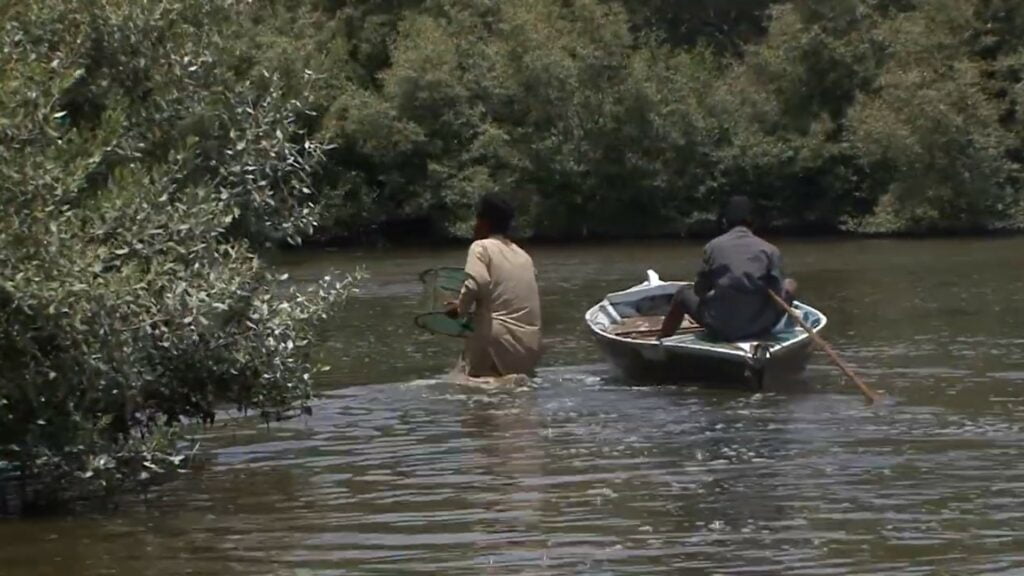
The once abundant wetlands of Karachi have shrunk to a fraction of their former size. Mangroves covering thousands of acres have been cut as a result of deforestation caused by the urbanization of Karachi’s coast. They have also been affected by settlements along the Lyari and Malir Rivers.

The resultant pollution poisons not just the roots of the trees but also the many life forms they nurture. Down the coast from the mangroves are the valuable species indigenous to the region and they are also trapped in a battle for survival.
Hawkesbay and Sandspit are one of the 11 beaches in the world where sea turtles come to nest every year. The turtles are a threatened species but their nesting area is under a far greater threat as bigger, better and always illegal huts are encroaching upon their nesting sites.

Civic agencies themselves are party to this encroachment.
Despite rising awareness about the importance of Environmental Conservation, the invaluable ecology of the natural shoreline is still vulnerable to poachers and the appropriation of public spaces for private development projects.
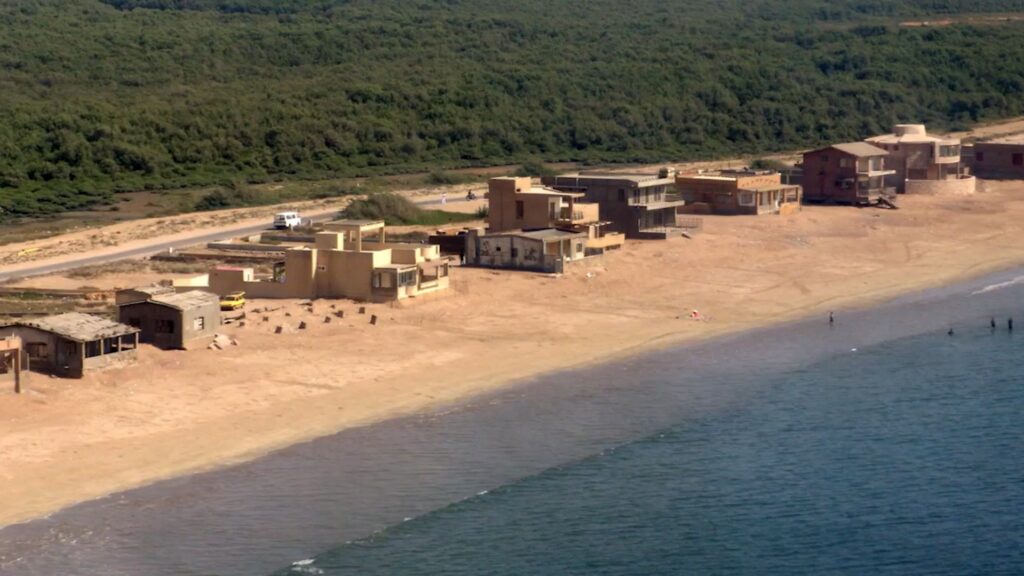
Fishing communities along the coastline suffer the consequences as much as the Flora and Fauna that have sustained their way of life for generations.
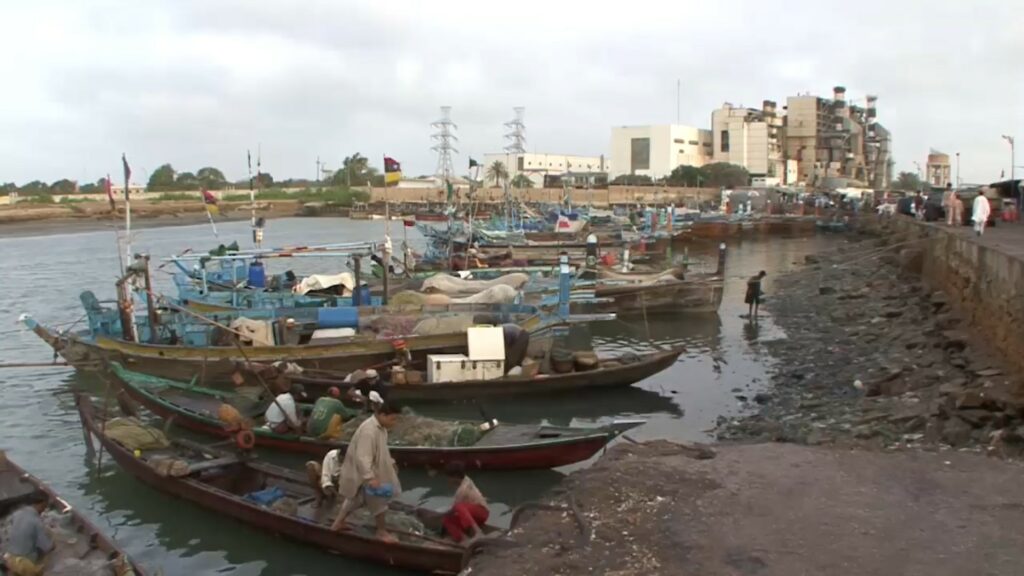
“Coastal inhabitants are deprived of all kinds of basic facilities. They don’t have access to clean drinking water or healthcare. In fact, they are deprived of all their basic human rights. They have been ignored by the Government and are completely marginalized.” Said Mohd Ali Shah, Chairperson Pakistan Fisherfolk Forum.
The general public is another interest group that is deprived of its intrinsic rights to recreation in any attempt to gentrify the seafront. As the lay of the land has changed, Karachi’s cultural identity has also been eroded.
The land-owning agencies that have traditionally held the Deeds for most of the seafront have been sidelined over the years. This has happened because successive governments have conveniently ignored them in the decision-making process. These agencies and other interest groups need to aggressively lobby the representatives and institutions that are supposed to protect their rights.
When those rights are threatened, they need to challenge any project that violates the fundamental principle of the doctrine of trust, for example – land reclamation.
Reclamation itself is an interesting choice of word, meaning as it does the taking back of something by its rightful owner. Here is an example of how exactly it works land reclaimed by DHA in Phase 8 has shrunk the mouth of the Malir River to half its former size.
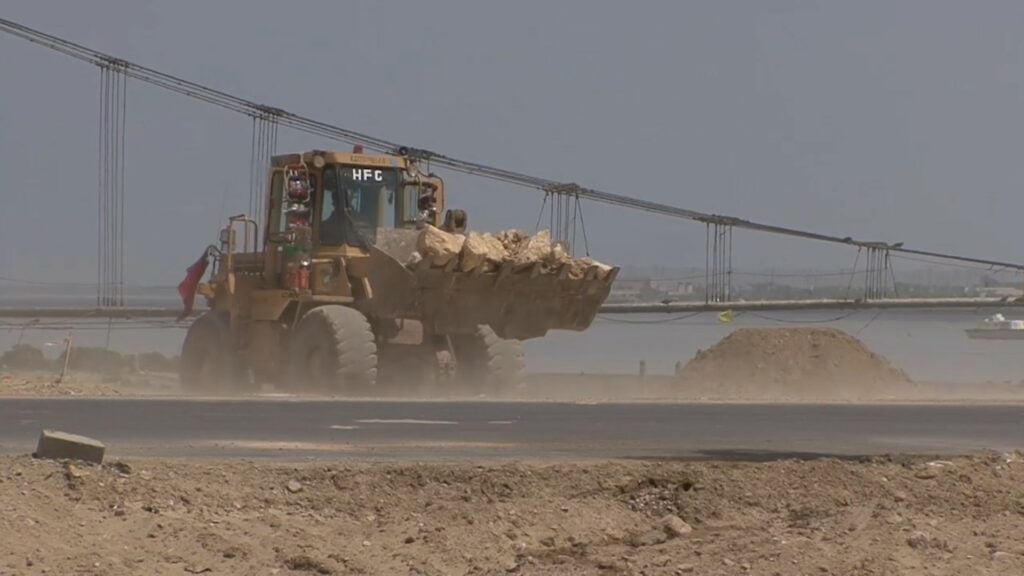
“The outfalls into the sea of Karachi’s natural drainage system have been blocked by constructing elite housing colonies on them. This is one reason why Karachi floods. DHA has already done plotting on the outfall of the Manzoor Colony Drain in Gizri Greek. Two of Karachi’s main drains falling into China Creek backwaters are blocked as mangroves have been cut down for a KPT housing colony. That’s why these areas flood.” Arif Hasan, an Architect said in a statement. “These changes have not only affected the coast but also the city. The livelihoods of the fishing communities has been greatly affected.”

“Reclamation is causing a lot of problems, not just for the environment, but also disturbs oceanographic currents.” Mir Hussain Ali from the Sindh Environmental Protection Agency said.
“Since most of the reclamation has been done by DHA, the Government of Sindh at one time did take up the case and declared further reclamation illegal as it does not fall under allotted land.” he added.

“The Government of Sindh has strict views on land reclamation that further reclamation cannot be allowed. As far as the environment is concerned, it is up to the Environmental Protection Agency to issue them a notice under the Pakistan Environmental Protection Act that they are violating the law by disturbing the natural habitat.” Mr. Ali concluded.
Thanks to the constant greed for land, the sea is being pushed back not just along the shore but also in backwaters like Boat Basin along the road named after Mai Kolachi.
“Boat Basin is the backwaters of Karachi. There is always neutral ground wherever land meets the sea, which acts as a flood basin during the rains. It slows down floodwaters before it reaches the sea.” said Parveen Rehman, Director Orangi Project.

“It also absorbs high tide water so it doesn’t affect the land. These backwaters are home to mangroves, which are nurseries for fish and shrimps. Also, mangroves act as a natural barrier to floods.” she added.
“Not only do backwaters prevent rainwater from entering the city, they are home to mangroves, which in turn can prevent floods.”
She added that about 7 years ago, the Karachi Port Trust built the Mai Kolachi bypass and paid no heed to the importance of Boat Basin while building the bypass. The natural drain over which the bypass is built has been reduced to just half its original width of 65 feet along with the base, which has been reduced too, because of which all the mangroves at the back have been wiped out. Furthermore, she said that Karachi port Trust (KPT) is also reclaiming wetlands and shrinking the backwaters. “The Boat Basin backwaters are of no importance to them” she added. “It’s all about making money.”

Changes like this will benefit the already affluent. Karachi’s more privileged citizens might celebrate its facelift into a world class city. Consequences, however, do not discriminate on the basis of class. If encroachment on the sewage and storm water drainage system of Karachi continues, the brunt of it will be borne not just by the poor but also by the privileged.
“All land reclamation must be stopped immediately. The backwaters should be restored to their natural state and a flyover constructed where Mai Kolachi passes over the natural drains. At least one flyover should be made for the fish and the mangroves.” said Parveen Rehman.
If they knew about the nature and magnitude of the waste matter and Industrial effluent being dumped into the Arabian Sea every day, people visiting the Clifton Beach and Seaview might think twice before venturing into or romanticizing it.
Karachi received 665 million gallons of fresh water every day out of which 520 million gallons go to domestic households and 145 million gallons are diverted to Industries. Meanwhile, 20% of this fresh water is consumed and the remaining 80% is converted into waste. The three treatment plants that are supposed to filter it before runoff are underutilized because of faulty or non-existent connections only 20 percent of Karachi’s sewage makes it to one of these treatment plants the rest is discarded into the sea through natural drains.

As it is waste from the engines of industry, is disposed of with similar carelessness. A treatment plan was set up with the help of the Netherlands government but its operational success is clearly questionable.
Fehmida Firdous from the Sindh Wildlife Department said, “Industrial and domestic waste is laden with lethal chemicals and heavy metals that are very harmful to marine life. Karachi’s coastal waters were pristine 30 years ago. There were few industries and little pollution. Not as much sewerage entered into the sea. Now, there is so much sewage and it is all released untreated into the sea. Our marine life is dying because of it. You’ll also find dead specimens on the beach.”

The cattle colony in Landhi is a perfect example of this gala’s disregard for anything beyond the immediate. With 1500 Farms Housing 400 000 buffaloes and cows, it is the largest concentration of dairy animals in one place in the world.
It releases 8,000 gallons of manure either directly into the see-through drains or spreads some out to dry, thus expelling ozone depleting methane into the atmosphere. The manure is killing off all marine life in its proximity.
“Pollution enters the sea via the Lyari and Malir rivers. People use illegal nets to catch small fish, which are not part of their diet, but instead are fed to poultry to speed up their growth. Toxins in the fish are transferred to the chickens, which we consume and face health problems ourselves.” Babar Ali from WWF Pakistan said.
“Box trunks are required on both banks of Lyari and Malir rivers. Box trunks are covered drains that carry sewage to treatment plants before releasing it into the sea. The rest of the riverbed can function as a storm water drain. It’s a simple plan that will cost only $120 million to implement, which is a small price to pay to save Karachi, its sea and its inhabitants.” Said Parveen Rehman.

The fact that there is a long-term solution to this that is not being aggressively pursued adds insult to injury. To date all of Karachi’s Master plans have been based on sound planning principles. They identify sustainable solutions to issues like waste disposal and land utilization in the face of growing population density but those plans traditionally have been made completely redundant by a lack of political will.
There is a growing distance between the Karachi Strategic Master Plan 2020 developed by the last local administration and its execution.
If four basic principals of urban planning are adopted, the violations against the environment, society and culture, which these projects could bring can be kept in check, said Arif Hasan, an architect who was interviewed.
What are these principals?
The first is that planning will take into account the ecology of the land. The projects should not destroy the ecology of the area.
The second principal is that land use should be determined on the basis of social and environmental concerns and not just on the value or potential value of the land. Everyone’s out to make a quick buck these days. Land has been turned into a commodity. We should consider it an asset instead, he added.
The third principal is that planning must benefit the majority, which is the working class and lower-middle class.
The fourth principal of urban planning is that the cultural heritage of different communities must be preserved in all its various forms.
Adopting these principals changes the face of urban planning completely, he said.
The choice is not as some suggest as simple as progress or no progress. Activists point out that while development is necessary citizens need to know their rights, they need to think about how much development they want and at what cost.
When citizens have known about and exercised their rights, they have been able to change things for the better. Consider the story of Sugarland City.
Sugarland City was launched in June 2006. Nakheel, a subsidiary of DMR Corporation signed a memorandum of understanding (MoU) with the then Prime Minister Shaukat Aziz to develop a large tract of Hawkesbay land in Keamari Town.
The city within a city dubbed ‘Sugarland’ was to be built on 68,000 acres.

“Our fishermen catch fish along the coast of Sandspit all the way to Hub. When Sugarland City is built, will fisherman be allowed there?” a local, Mohd Hussain from Mahigeer Tehreek said. “They won’t be able to even pass by because of security concerns.”
“It’s the elite who will live there, not the fishermen. What is the point of such development where the original coastal inhabitants have been deprived of their rights, while preference is given to others instead. Karachi is already so overpopulated; our sewerage system is destroying our coast and millions of people will live at Sugarland City and their waste will also end up in our seas.” He added, asking how will the Government deal with that?
“They should think about the repercussions of any project.” he said.
“I have seen the waterfront development plans. I felt sick just looking at them. I think I’ll die if they ever go ahead with plans.” a local sea hut owner said. “Whom will these developments cater to? Probably 0.1% of the population. They’re trying to build an exclusive experience all the way from Bundal Island to here.”
Citizens and stakeholders launched a vigorous campaign of opposition in the press and the courts. The project was eventually abandoned then another front was opened in the battle for the coast when the DHA announced waterfront development plans for its 14-kilometer stretch of beach.

Yet again hotels, towers, flats, shopping complexes, recreational areas where to dot the Seaview Beach stretching right up to the Gizri Creek. The southernmost tip of DHA Phase 8 was also sold to Emaar Pakistan.
This global construction firm of the Palm Jumeirah and the world in Dubai Fame has started construction on Crescent Bay, which is a high-rise residential and Commercial complex on reclaimed land and DHA Phase 8. it will feature among other things, a five-star beachfront Resort that will restrict ordinary Karachiite’s access to Sea View even further, but this was nothing compared to the implications of Emaar’s planned super luxury development on Bundal Island off the coast of Karachi, the Diamond Bar Island City.

Approval for the development of Diamond Bar Island City by the UAE based company was granted by the government in 2006. 12,000 acres were duly handed over to them. The $43 billion project was to be completed over a period of 13 years and would have included a one-and-a-half-kilometer long bridge connecting DHA Phase 8 to the Islands.
The modern city would have had 15,000 housing units, commercial plazas, leisure points, industrial parks, free-trade zones, and port terminals and Bundal and Buddu Islands would have been irredeemably transformed.
Located just off the coast of Karachi, Bundal and Buddu Islands are two of the largest in the Indus Delta. The shifting sand dunes here can reach heights of up to three meters. Removing these Islands from the food chain they had an integral part of would have spelled tragedy for the multitude of life forms they nurture.
Local fishermen were concerned that their passage to open sea would be blocked and that they would no longer be able to land on the islands. The northern area of the island has a dense Mangrove cover that is a haven for migratory birds and a breeding ground for fish and other marine life.

The project would have violated the Pakistan Environmental Protection Act and many international biodiversity conventions. The world conservation Union IUCN has declared the islands as a high priority area. The destruction of mangroves would not just destroy flora and fauna, it will leave the area vulnerable to tsunamis and cyclones.
“Karachi’s coast is prone to cyclones. The cyclones of the 30’s and 40’s were very destructive, but the biggest cyclone came in 1906, as a result of which sea water entered the city over Manora breakwaters and Sandspit. Winds blew at 110 mph and details are available in the Sindh Gazetteer.” said Arif Hussain.
“Roofs of houses blew away, trees were uprooted, and the entire old city was flooded even though it is at a height. Such a cyclone can come again. It is the mangroves and mudflats that can prevent damage from cyclones to some extent.
Consider what will happen in the 10-15 years during which Karachi’s population swells further. Will the sea remain passive as we continue to steal its shore, restrict its movement and poison it. According to scientists, Karachi is one of 20 mega cities in South Asia that are in direct danger of rising seas as a result of global warming. What happens once the sea begins to push back?
The current economic downturn has forced the temporary shelving of some controversial projects but Finance like nature abhors a vacuum. When the time is right, the greed for land and profit will rare its head again. It is imperative for the people, representatives and institutions of Karachi to recognize their vulnerabilities and protect their strengths. They must work together to ensure their interest in communal spaces like seashores is held sacred as Karachi evolves.
“It’s quite simple, really. If the green turtle is affected, the egret is affected, the mangroves are affected, or the crab is affected, then we don’t want such development. Certainly, build what you want but keep these conditions in mind. I’m not saying that the coast should stay as it is. No. All development must be according to the principals of urban planning.” said Hussain. Life starts with water; life is not possible without it. In its treatment of this precious natural resource, weather stream, river, lake or sea, the human race can find its own reflection. The people of Karachi need to take a closer look at what is happening to their city by the sea.
Based on the YouTube Video Documentary Titled, “City by the Sea – Future of Karachi’s Coastline”
English

Urdu

Follow INCPAK on Facebook / Twitter / Instagram for updates.
